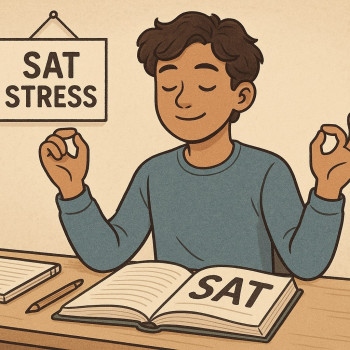Introduction — Why the SAT Matters for Monash Applicants
Thinking about applying to Monash University from the United States (or another country that uses the SAT)? You’re not alone. International applicants often ask whether Monash accepts SAT scores, what scores are competitive, and how the SAT fits into a complete application. This guide walks you — and your parents — through the essentials in a clear, calm, and practical way. We’ll cover what you should plan for, how to set score targets, how to present your results, and how tailored support (like Sparkl’s personalized tutoring) can make the whole process less stressful and more effective.

At-a-Glance: What to Know About SAT and Monash
Short version: Monash University accepts a variety of international qualifications and, for applicants from the U.S. system, SAT (or ACT) scores are commonly used as part of your application for undergraduate admission. While exact cutoff scores can depend on the course and year, understanding how admissions officers view SAT scores will help you decide how much time to invest in preparation and whether to pursue alternative pathways or supplementary evidence.
What the SAT demonstrates
- Academic readiness in evidence-based reading, writing, and math.
- Comparable benchmarking for international applicants.
- Optional: Some programs may look at specific sections or higher-level math readiness depending on the course.
Do You Need an SAT Score for Monash?
Monash does not have a single global rule that applies to every applicant worldwide. Admission requirements differ by country of education, the specific undergraduate course (Engineering, Commerce, Medicine, etc.), and whether you apply directly or through a pathway program. For many U.S.-based applicants, submitting SAT scores is a standard way to demonstrate academic credentials.
When SAT is commonly used
- As a substitute for local qualifications when applying from the U.S.
- When Monash requires an internationally recognized standardised test score for benchmarking.
- To strengthen an application when school profiles or GPAs may be difficult to equate.
Target Scores — What Counts as Competitive?
It’s tempting to look for a single “magic number” — but target scores depend on the course. Highly competitive programs (e.g., certain engineering majors, business analytics, or selective double degrees) typically expect stronger academic indicators than more general programs.
Guideline SAT ranges
| Program Type | General Competitive Range (Total) | Notes |
|---|---|---|
| Highly Competitive (Engineering, Business Honours, Competitive Science) | 1350–1550+ | Higher section scores in Math recommended for STEM applicants. |
| Moderately Competitive (Commerce, Arts with prerequisites) | 1200–1400 | Strong EBRW helps for humanities/social science tracks. |
| Broad Access Programs (General degrees) | 1000–1250 | Supplementary materials and GPA matter too. |
Remember: These ranges are useful as planning targets, but they are not official cutoffs. Admissions decisions also consider curriculum rigor, personal statements, references, and any required portfolios or interviews.
Which SAT Scores to Submit — Digital SAT and Sections
The Digital SAT (the modern format) reports section and overall performance. For Monash, admissions officers will look at both the overall score and the section breakdowns to assess readiness for course-specific demands.
Focus by subject area
- STEM applicants: prioritize high Math scores. Demonstrate problem-solving and quantitative readiness.
- Business and Economics: a balanced profile with solid Math and Evidence-Based Reading & Writing (EBRW).
- Arts and Humanities: stronger EBRW and evidence of coursework or writing strength can help.
Beyond the Score: Building the Strong Application
Monash looks at your application holistically. SAT scores are an important measurable piece, but they’re part of a bigger story you tell through grades, extracurriculars, personal statements, and any interviews or portfolios.
Components to strengthen alongside SAT
- High school transcript and course rigor — advanced classes (AP, IB, honors) show readiness.
- Personal statement — articulate why Monash and why that program.
- Relevant extracurriculars — research, clubs, internships, community involvement.
- Supplementary materials — auditions, portfolios, or interviews when required.
Timeline and Practical Steps — When to Test and Apply
Timing matters. Here’s a practical timeline you can adapt based on your senior year and application deadlines:
- Junior year (or equivalent): Start familiarizing with the Digital SAT format and take an initial practice test to set baseline scores.
- Summer before senior year: Targeted prep for sections that need the most growth (math, EBRW). Consider a structured plan with 1-on-1 tutoring if you need acceleration.
- Early senior year: Sit the SAT early enough to allow for one retake before application deadlines. Aim to have final scores ready at least 6–8 weeks before Monash’s required documentation deadlines.
- Application period: Submit all required documents, including official SAT reporting, transcripts, personal statements, and any course-specific materials.
How to Report Scores to Monash
When you register for the SAT, you can choose to send official score reports to institutions. Make sure you know the exact name to use on your application — “Monash University” — and confirm whether Monash requires official reports sent directly by the testing service.
Practical tip
Keep a checklist with: test date, registration deadline, score release estimate, and the date you requested official reports. That avoids last-minute scrambling and ensures your application is complete when admissions officers review it.
Personal Statement and Interviews — Tell the Whole Story
Your SAT shows readiness on paper. Your personal statement and any interviews show character, motivation, and fit with Monash’s culture. Use them to explain course choices, highlight independent learning, and show growth — especially if your SAT score isn’t as high as you hoped. Admissions readers love evidence of resilience and context.
What to emphasize
- Passion for the subject and any relevant projects or experiences.
- How your background prepares you uniquely for Monash.
- Clear, concise examples of leadership, problem solving, or academic curiosity.
How Sparkl’s Personalized Tutoring Can Help
Preparing for the SAT and shaping an application can feel overwhelming. That’s where personalized support makes a difference. Sparkl offers tailored 1-on-1 guidance, customized study plans, and tutors who break concepts into manageable steps. For the Digital SAT, Sparkl’s approach can include focused practice on digital test-taking strategies, targeted math problem sets, and AI-driven insights to identify the highest-impact improvements.
What to expect from effective tutoring
- Diagnostic testing and a roadmap tailored to your baseline.
- Regular practice with feedback on strategy, not just problem answers.
- Support for application components — essay coaching, mock interviews, and score interpretation.
Example Student Scenarios
Real-world examples help make the abstract concrete. Here are three typical applicant profiles and how they might approach SAT planning for Monash:
Case 1: STEM-focused student aiming for Engineering
Profile: Strong coursework in AP Calculus and Physics, but practice SAT Math score needs improvement. Plan: Prioritize math-focused study blocks, take at least two SATs spaced three months apart to track progress, and use Sparkl’s 1-on-1 math sessions to close gaps in problem-solving techniques. Complement scores with project-based evidence (robotics competition, independent engineering projects) in the application.
Case 2: Business applicant with balanced strengths
Profile: Consistent grades, good quantitative skills but moderate EBRW. Plan: Focus on EBRW improvement through reading-based practice and targeted grammar review, while maintaining math. Use the personal statement to show leadership in entrepreneurship or finance-related clubs. A mid-to-high range SAT total with a solid math section will make your application competitive.
Case 3: Arts/Humanities applicant with standout extracurriculars
Profile: Excellent writing samples and leadership in arts programs, SAT total is average. Plan: Use your application essays and portfolio to highlight unique work. Prepare for the SAT to reach at least the moderate range; consider Sparkl’s essay coaching to craft a compelling personal statement that contextualizes your scores and amplifies your creative achievements.
Common Questions Families Ask
Does Monash prefer SAT or ACT?
Monash accepts a variety of test scores; there’s no universal preference. Choose the test that best plays to your strengths and schedule. The Digital SAT’s adaptive format may suit students who prefer fewer long passages and a comfortable digital testing environment.
Can I apply without SAT scores?
Depending on your education system and the program, other qualifications may be acceptable. If you’re unsure, prepare SAT scores as a strong, standardized data point — they rarely hurt and often strengthen an international application.
How important are SAT subject tests?
Traditional SAT Subject Tests were discontinued in the past; what matters now is your subject-specific coursework, AP/IB exams, and demonstrated experience. If a program requests evidence of aptitude in a specific area, strong AP scores or coursework are effective substitutes.
Checklist: 10 Practical Steps to be Ready
- Confirm Monash program-specific entry requirements and deadlines for your application year.
- Take a full, timed Digital SAT practice test to establish a baseline.
- Create a study calendar that includes at least 8–12 weeks of focused prep (more if you need big gains).
- Prioritize section-specific weaknesses — the most efficient score gains come from focused practice.
- Consider 1-on-1 tutoring for targeted improvement and accountability.
- Balance SAT prep with coursework so grades remain strong.
- Draft and revise your personal statement early; get feedback from teachers or tutors.
- Organize transcripts and any supplementary materials (portfolios, references).
- Schedule the SAT early enough to allow one retake before application deadlines.
- Double-check score reporting and application submission timelines to ensure everything arrives on time.
Sample Timeline Table
| When | Action | Why it matters |
|---|---|---|
| Junior Year Spring | Take a diagnostic Digital SAT | Sets baseline and informs study plan |
| Summer before Senior Year | Start focused prep / tutoring | Build skills without academic-year pressure |
| Early Senior Year | Take first official SAT | Allows time for retake if needed |
| Mid Senior Year | Finalize personal statement and submit application | Complete application package on time |
Final Thoughts — Be Strategic, Not Stressed
Applying to Monash with SAT scores is a marathon, not a sprint. Focus on steady improvements, balance test prep with strong coursework, and build an application that shows who you are beyond the numbers. If test scores aren’t where you hoped, use your essays, projects, and references to add context and highlight strengths.
Personalized help — like Sparkl’s 1-on-1 tutoring, tailored study plans, expert tutors, and AI-driven insights — can accelerate progress and give you confidence. Whether you need a math boost, reading strategy, or essay polish, consistent, focused support often produces the best results.
Quick Resources for Next Steps
To move forward: set your first diagnostic test, create a study plan with milestones, and consider a few tutoring sessions to see how targeted help feels. Keep communicating with your school counselor and the admissions office at Monash if you have program-specific questions. Above all, stay curious and persistent — the application is a chance to tell your story, and you’re the best person to tell it.

Is Success Possible? Yes — With a Plan
Thousands of international students successfully use standardized tests to gain admission to universities like Monash. With a thoughtful plan, realistic score targets, and the right support, you’ll give your application the best possible chance. Good luck — and remember, steady progress wins more races than last-minute cramming.
If you want, I can help you design a personalized SAT study timeline or draft a sample personal statement tailored to a Monash program — tell me your target course and current score baseline, and we’ll take it from there.














No Comments
Leave a comment Cancel